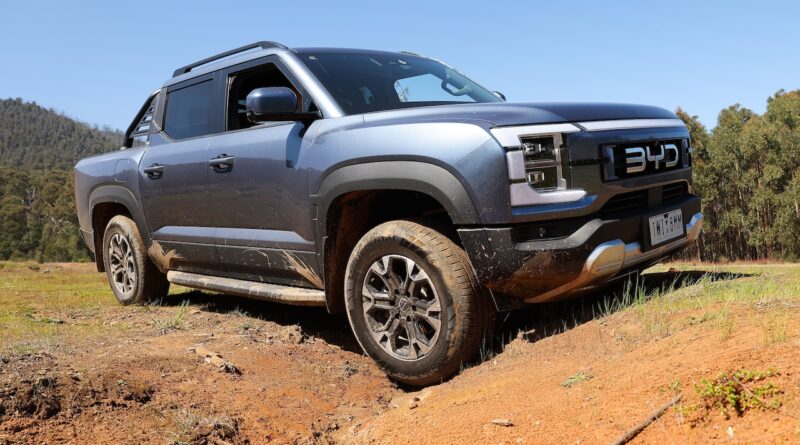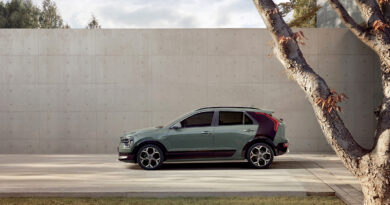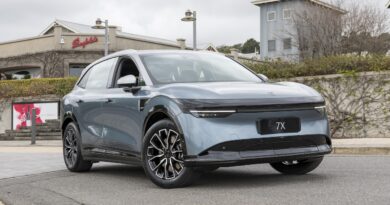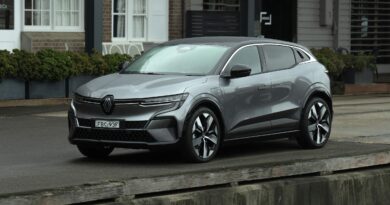2025 BYD Shark 6 Premium review: First Aussie drive of game-changing ute rival for Ford Ranger and Toyota HiLux that will absolutely shock you
BYD might still be chasing down Tesla in Australia in terms of sales, but it seems the Chinese brand is already equal with (if not ahead of) its American rival when it comes to making big, bold Musk-like promises that don’t always come true.
The brand in Australia has promised through the years to build BYDs in Adelaide, and then in Bowral, and has declared on multiple occasions that BYD will outsell Toyota.
OK, admittedly, that last one is at least theoretically possible.
READ MORE: Bigger BYD Shark electrified ute could shake up market dominated by Ford, Chevrolet and Ram
READ MORE: 2025 BYD Shark 6 review: Can the first PHEV ute take the workhorse fight to the Ford Ranger, Toyota Hilux?
READ MORE: The new breed of dual-cab ute: 2025 BYD Shark 6 PHEV to hunt down Ford Ranger and Toyota HiLux from next month – but can it convince you to abandon diesel?
So what has BYD’s propensity for overly ambitious statements got to do with this first Aussie drive review of the Shark 6 plug-in hybrid ute?
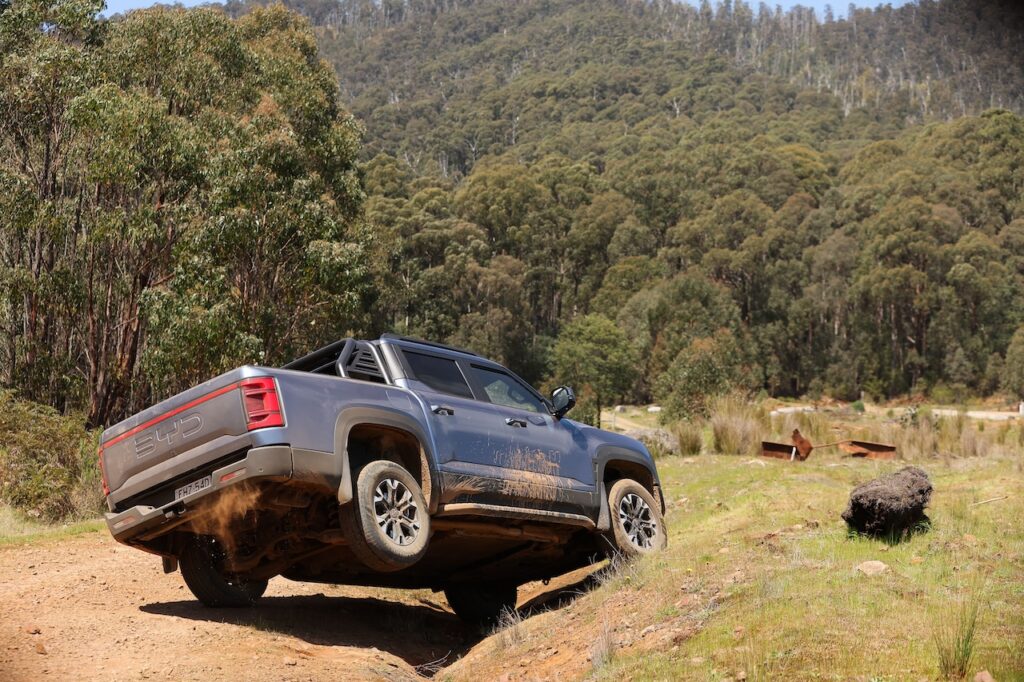
Well about a year ago BYD importer Luke Todd was discussing the Shark 6 with a couple of sweaty, sceptical Aussie journos at the Tokyo Motor Show.
“It’s a game changer in my opinion,” he said.
As easily dismissed as that statement might have been then… it has turned out to be something entirely different.
Accurate. Utterly and entirely accurate.
2024 BYD Shark 6 Premium price and equipment
The 2025 BYD Shark 6 Premium – to give it its full name – is the first plug-in hybrid dual cab ute to go on-sale in Australia.
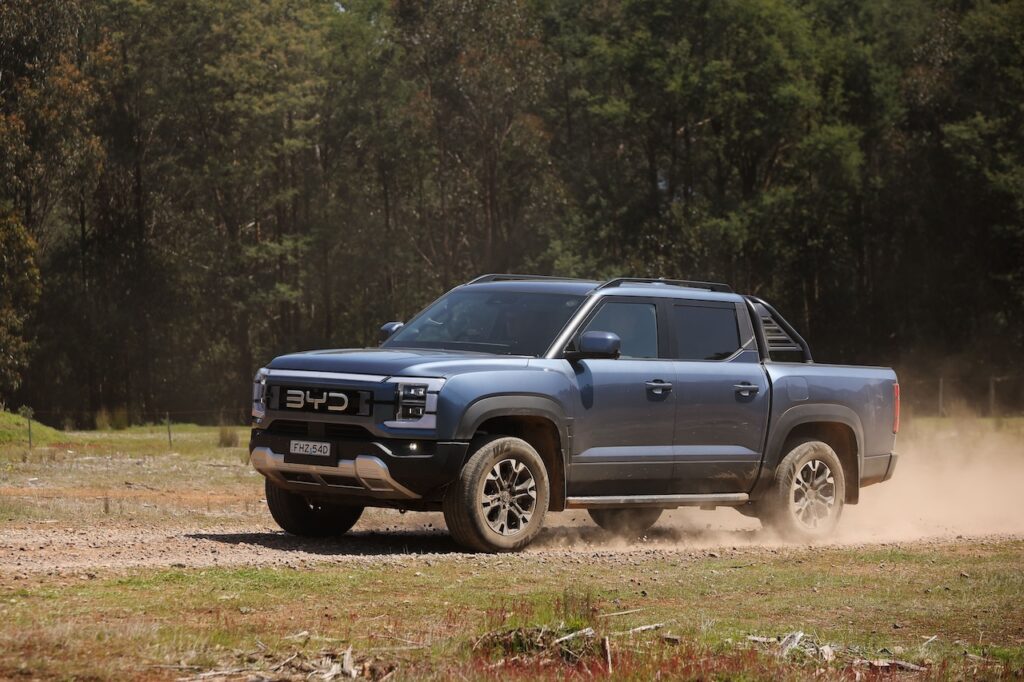
That happens on October 29 when the pricing – expected to start at or under $60,000 plus on-road costs – will be announced.
So think about that for a minute. Here’s a vehicle with a sophisticated petrol-electric 4×4 powertrain, a sizeable LFP battery pack, an electric-only range of about 80km, a combined range of more than 700km, a swag of comfort and safety equipment, a pile of cabin technology and even the ability to plug in a kettle to boil water for your cup of tea.
All for the same money as a mid-spec turbo-diesel Ford Ranger or Toyota HiLux.
It will also likely undercut the next two plug-in utes that are rolling out in 2025 – the GWM Canon Alpha Hi4T and the Ford Ranger PHEV.
So what’s not to like? Some people won’t appreciate its entire dependence on electronics and electricity to make its 4×4 systems work – no low range, no diff locks, the braked towing capability is 1000kg off the best in class (at 2500kg) and the 790kg payload leaves something to be desired too.
At least the tub is wide and long and capable of fitting an Aussie 1165mm x 1165mm pallet.
2024 BYD Shark 6 Premium: What we think
That the 2025 BYD Shark 6 Premium is a ute makes its potential reception all the more intriguing.
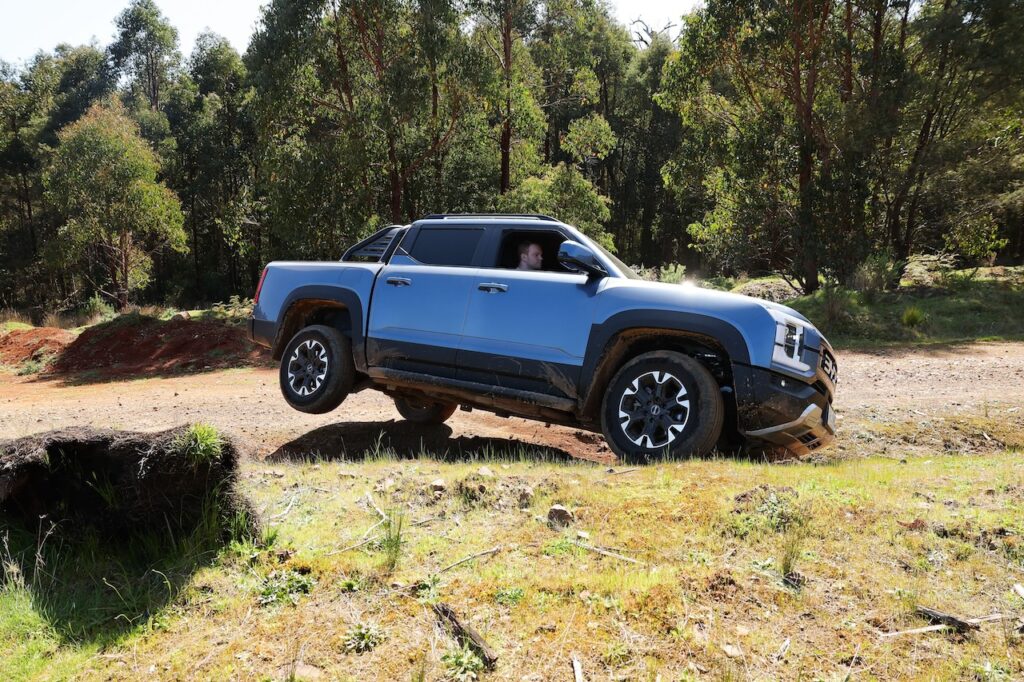
This would have to be the most conservative segment of them all. Rattly old diesel engines, real metal gears to grind, winching, mud, towing caravans, beards, flannies, VB. Imagery aside, this is a place where capability counts.
Maybe – just maybe – the powertrain technology the BYD offers is anathema for some ute buyers. Maybe its Chinese origins will put some of them off.
But whether the Shark 6 chomps on its rivals or gets turned into the auto equivalent of deep fried flake, there’s no ignoring that essential core of its being – the powertrain.
The concept simply works for utes. It can provide clean, green running in town, yet also dispense with the range issues that have reduced pure-EV utes to irrelevance.
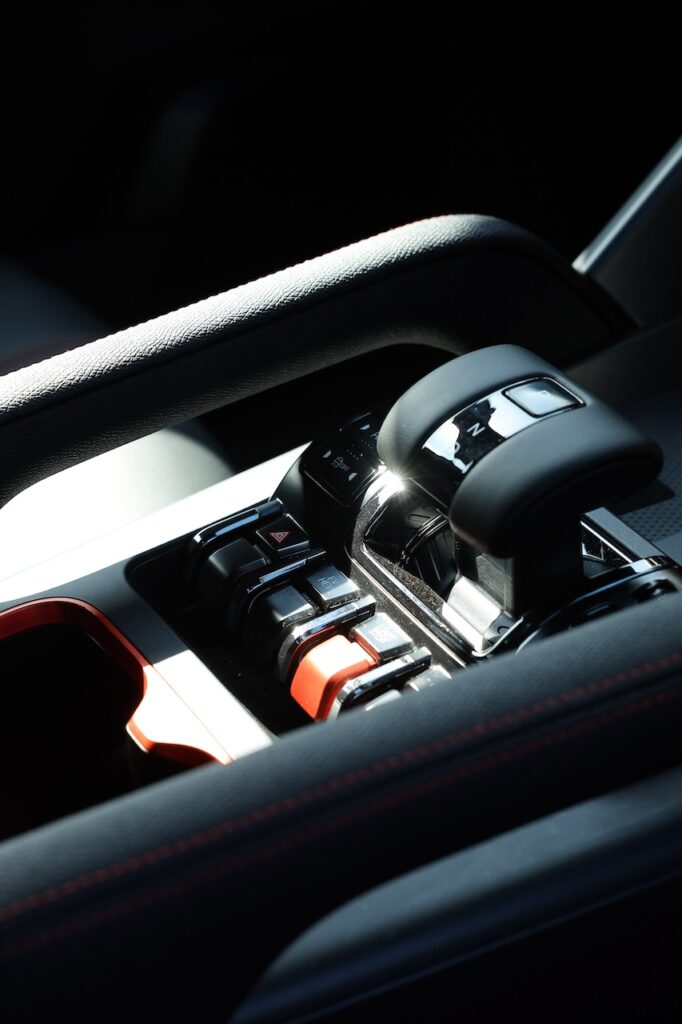
No diesel ute drives with anything like the powertrain civility of the Shark 6. In EV or hybrid mode the software brains are almost always trying to prioritise electric running. So that means smooth, instant and quiet acceleration like an, erm, EV.
When the 1.5-litre petrol engine does intervene to recharge the battery or drive the wheels (usually only above 70km/h and not very often) it does so quietly and smoothly.
Combine that with light and direct steering and at least a fairly decent ride quality, we’re pretty confident the Shark 6 has instantly made every diesel ute irrelevant as a city and urban drive. Of course, electricity can’t make the Shark 6 shrink, which is a pity because at 5457mm it’s more than 200mm longer than a Ranger.
That’s only “pretty confident” because this drive of a pre-production prototype was almost entirely on dirt and both the software and chassis tunes were superseded and soon to be updated.

So let’s expand the performance envelope a bit. The civilised Shark 6 disappears when you whang the throttle hard and let the full 321kW and 650Nm rip. Even on dirt it hunkers down, grips and fires up the road fast – faster than you’d think 2710kg (yep that’s its kerb weight) has a right to.
In fact, faster from 0-100km/h than any other ute around, including the Ford Ranger Raptor (5.7 secs versus 6.0 secs).
But for all its appeal there’s little doubt the Shark 6 won’t run with the Raptor off-road. It just doesn’t have the chassis skills, the grip or the wheel articulation. It probably won’t be able to match a standard Ranger.
In part that’s because it runs independent double wishbone rear suspension, a nod to BYD’s desire to make this thing an off-roader that drives as well as possible on-road.
But it’s also because of the powertrain that I’ve just been lauding. The electric motors provide both traction control and hill descent control and during our drive they managed to clamp spinning wheels over some moderate off-road challenges. But even BYD is looking at uprating the Shark 6 with diff locks down the road.
Low range won’t be required of course, not when you’ve got instant access to all that electric motor torque.
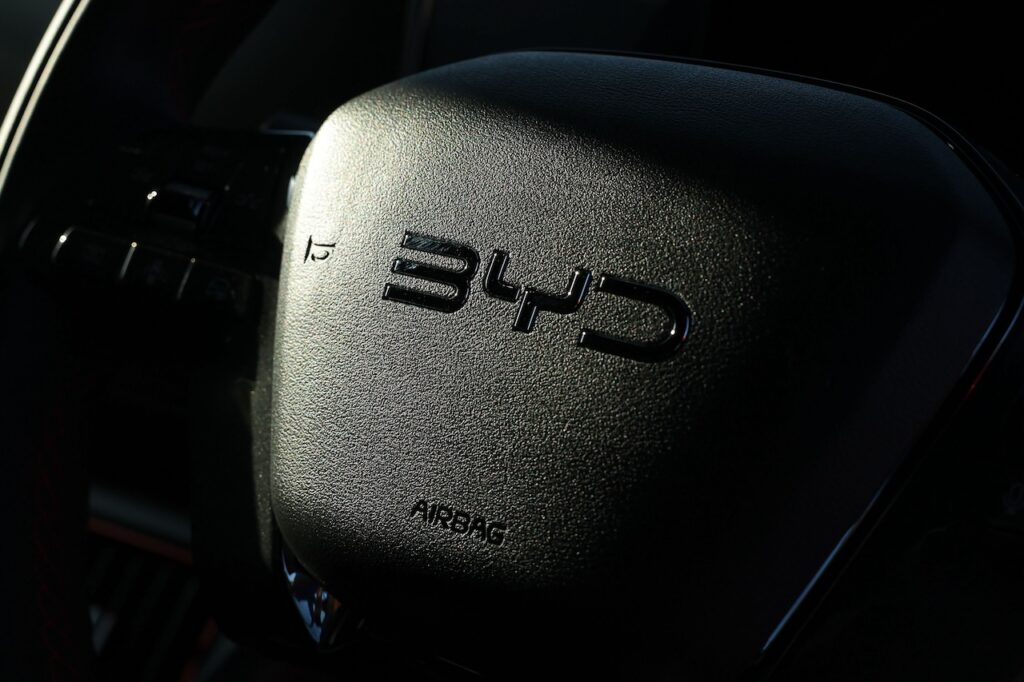
So what about fuel economy? The claims are 2.0L/100km with the battery state of charge above 25 per cent and 7.9 L/100km below 25 per cent when the engine is working harder.
Fossicking through the trip computers of cars on test, economy numbers varied from 7L/100km to 15.6L/100km and 2.6kWh/100km to 15.6kWh/100km. So long and varied runs are required to see what the trend is.
FYI, the Shark 6 uses 95 RON fuel and has a 60 litre tank.
Like its powertrain the cabin of the Shark 6 is alien yet enticing. The giant infotainment screen rotates – that’s a BYD thing if you didn’t know – and there are lots and lots of features and apps buried within it. A large digital instrument panel, a larger head-up display and plenty of buttons and dials to twiddle adds intimidation.
More welcome are the supportive front seats and the spacious rear cabin area. The seats are reclined to be much more comfortable than the usual ute fare.
2024 BYD Shark 6 Premium: Verdict
We’ve still got a few months of 2024 to go so this statement might yet be superseded, but right now I can’t think of a more important or interesting electrified vehicle I’ve driven this year.
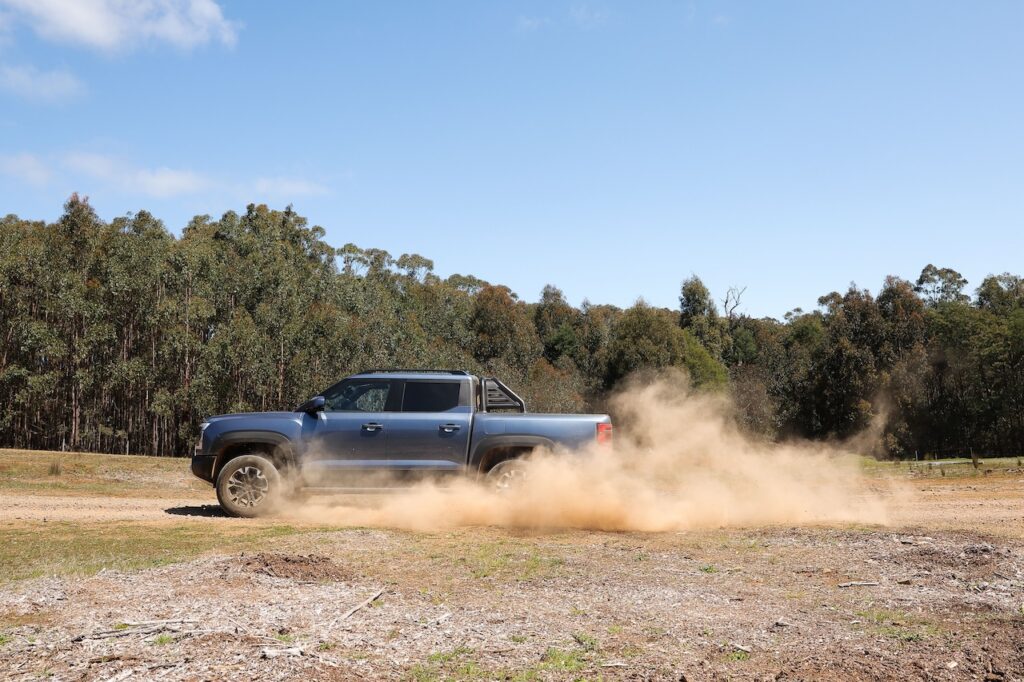
Sure, there are concerns such as the limited braked towing and payload and just the fundamental complexity of the technology and how it will hang together in Australian conditions.
In stock form I fear for the Shark 6’s integrity on the endless ruts of an outback horror show like the Anne Beadell Hwy. Maybe that’s why a lift kit is on the list of planned accessories?
And of course, we haven’t driven it long enough and in enough different conditions to truly grasp its full capabilities. Nor have we driven the final production version.
But the potential is clear. Whatever the Shark 6’s fate on the showroom floor the technology it contains is the future of utes.
Game changing? No question.
SCORE: 4.0/5
2025 BYD Shark 6 specifications
Price: From about $60,000
Basics: PHEV, 5 seats, 4 doors, Ute, AWD
Range: About 80km (EV only), about 800km (electric and petrol)
Battery capacity: 29.58kWh
Battery warranty: 8 years/160,000km
Energy consumption: TBA (EV consumption), 7.9L/100km fuel use in hybrid mode
Motors: 1 front and 1 rear; 321kW/650Nm (combined outputs)
AC charging: 7kW, Type 2 plug
DC charging: 55kW, CCS combo plug
0-100km/h: 5.7 seconds

